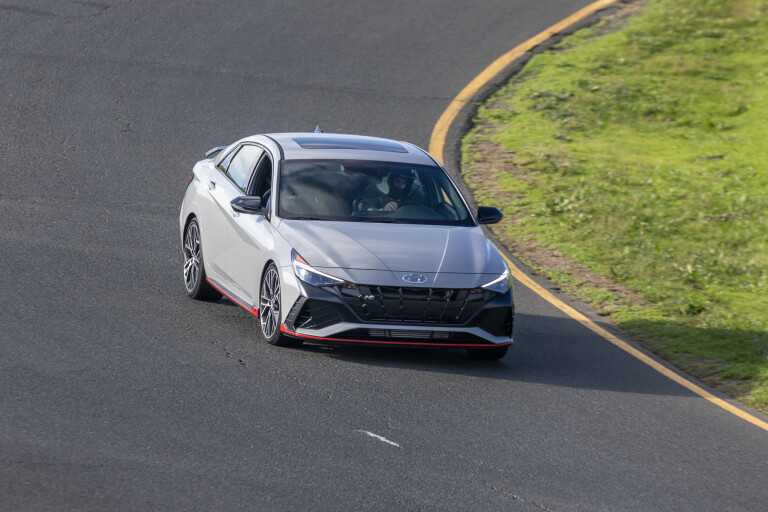
Things we like
- Drivetrain
- Chassis tuning
- Magic differential
Not so much
- Light manual shift action
- Rear chassis brace blocks boot pass-through
- Lack of data acquisition for track work
Hyundai is getting very serious about its performance cars. The i30 N hatch has been around for a couple of years and it’s a formidable thing, but when they enlist former BMW M head Albert Biermann to massage and tweak ordinary Hyundais, the result is extraordinary.
The company’s approach with these pure N cars always involves comprehensive engineering and the cars that lucky buyers take home are nothing less than proper factory specials that can’t be duplicated – no matter how much time and money an aftermarket tuner is given.
The Hyundai i30 Sedan N is the company’s first high-performance sedan and builds upon everything the N team has learned from their previous work, so any improvements are made in the noble pursuit of going quicker.
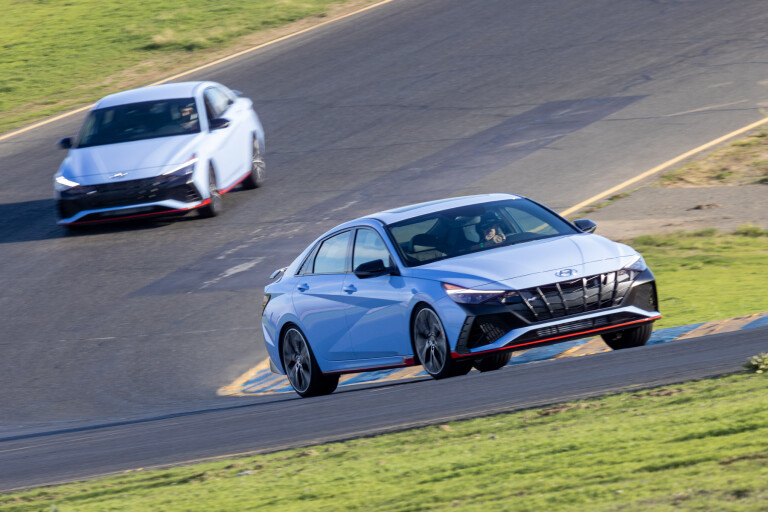
The single turbo, 2.0-litre GDI engine makes 206kW from 5500 to 6000rpm and 392Nm from 2100 to 4700rpm, the same outputs as the updated i30 N hatch. The exhaust is tuned to give this N a rowdy attitude and is driver-selectable.
If you’ve selected the eight-speed wet dual-clutch gearbox, you get an extra 7kW in a permissible overboost mode that Hyundai likes to call N Grin Shift. The additional power is sustained for a maximum of 20 seconds and the engine requires a 40-second recovery before allowing NGS again.
A dual-clutch car also benefits from tuning that maintains torque output during upshifts, as well as launch control that drops 0-100km/h acceleration to a remarkable 5.3 seconds.
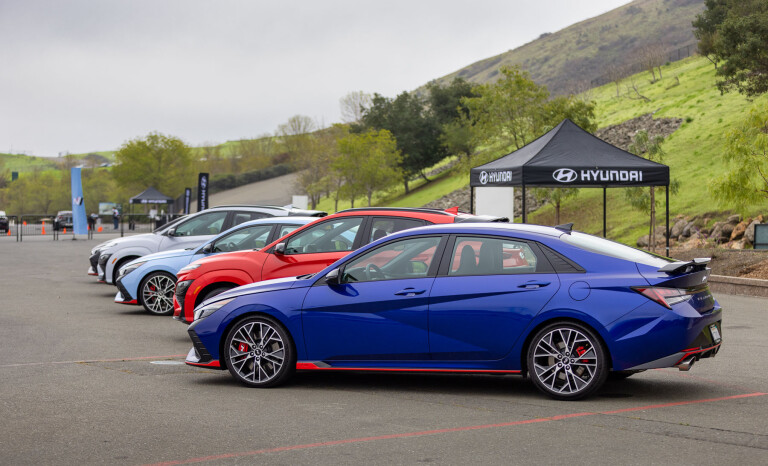
The bespoke, close-ratio, six-speed manual gearbox may be the enthusiast’s choice and while it doesn’t have the overboost function, it does have rev-matching for seamless downshifts, thankfully switchable for those drivers who prefer to execute satisfying heel-and-toe gearchanges.
Perhaps the biggest secret to the i30 Sedan N’s dynamic performance is the electronically controlled limited-slip differential. Instead of relying on traditional remedies like unequal-length half shafts or fancy suspension geometry, N engineers have pursued e-diffs as a cure for that inevitable, naughty front-drive behaviour.
Indeed, these things are capable of varying the amount of torque distributed to one axle or the other, mitigating some understeer as well as opening up under braking for unmatched stability.

The N’s suspension design starts with the i30 Sedan’s basics, but with performance-minded tweaks. It’s a MacPherson strut design at the front and a multi-link set-up at the rear, with stiffer springs, anti-roll bars, and bushings.
Electronically controlled dampers provide Comfort, Normal, and Sport modes that are suited to the firmer settings. Ride height is surprisingly unchanged from the standard i30 Sedan.
Hyundai has taken lessons learned from its World Rally Championship cars and applied them to this Sedan N. They call it an Integrated Drive Axle and what they’ve done is completely redesigned the way the driveshafts mate to their respective hubs. And that delivers a number of benefits.
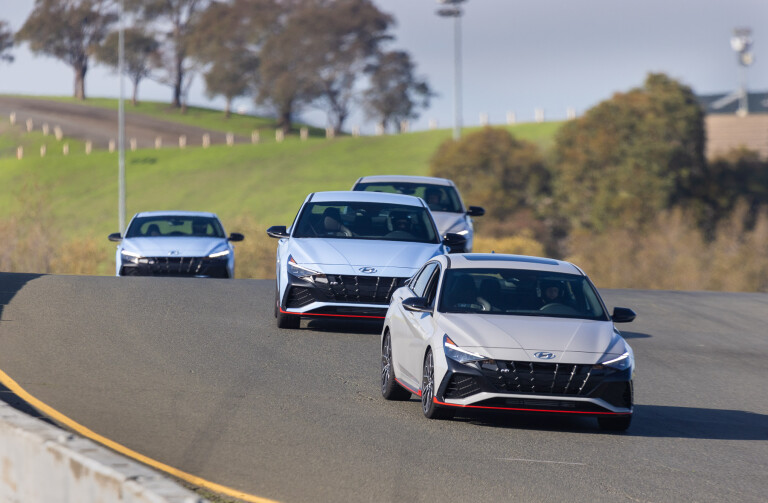
Among them are a more robust assembly of the hub and wheel bearing that can better withstand the greater loads placed upon them by this performance-oriented Sedan N, as well as reducing weight by 1.7kg per side.
Steering is electrically assisted, but in N spec it’s got a quicker ratio and an assist unit that is mounted to the rack for better response. Different levels of assist are selectable by the driver.
Brakes are similar to the i30 N hatch, with 360mm front and 314mm rear rotors clamped by red-painted, single-piston calipers all around. The system pre-fills brake fluid when the driver releases the throttle pedal, minimising response time and maximising pedal pressure, which allows for shorter stopping distances in emergencies, as well as more confidence for track day drivers. As with all N vehicles, this four-door uses a performance-oriented brake pad compound.
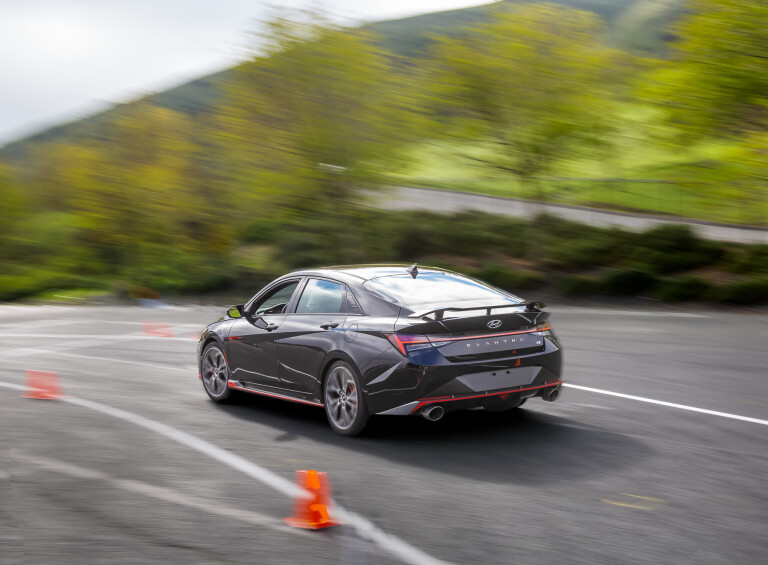
Exterior changes make the N version of the i30 Sedan visually distinctive, particularly the red trim that traces a line around the lower fascia, side sills, and lower rear bumper. There’s a boot-mounted rear wing, modest in comparison to that of the Civic Type R, and eight-inch-wide 19-inch wheels that are unique to the N and wrapped in 245/35 R19 Michelin Pilot Sport 4 S rubber.
Under the skin is N’s program of chassis stiffening that includes several strengthening points in the front end around the subframe, along with a pair of tunnel braces and reinforcements surrounding the upper strut mounts. Peering through the boot, you’ll spot the bright red rear strut tower brace that runs from the struts to the floor and is bisected by a horizontal bar.
As functional as it is, the brace limits the useability of the folding rear seat and makes passing through large objects from the boot difficult to impossible. In short, you’ll want to carry your bicycle on the roof. Kerb weight is within just a few kilos of the i30 N hatch.
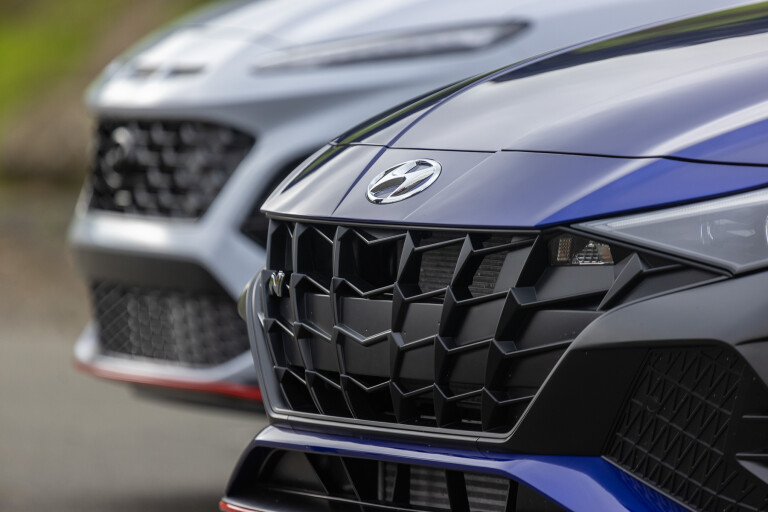
Changes to the interior are effective and subtle, but the biggest improvement is the addition of the N-spec, lightweight, two-piece bucket seats. They sit 10mm lower than those of the non-N i30 Sedan, are deeply bolstered and, for a premium touch, the N logo in the upper seatback is illuminated.
The steering wheel uses a standard Hyundai layout but with the addition of the two N buttons for quick selection of drive modes and a prominent red button that’s used for either the overboost function on dual-clutch cars or the rev-matching feature on six-speed manuals. Pedals are appropriately sporting, with a shiny alloy finish covered by rubber nubs for traction.
A fully digital instrument cluster has three themes – a simple aesthetic for Normal and Eco drive modes, a red-dominated Sport mode and a bespoke N mode that prioritises simple gear selection and speed displays under a prominent tachometer.
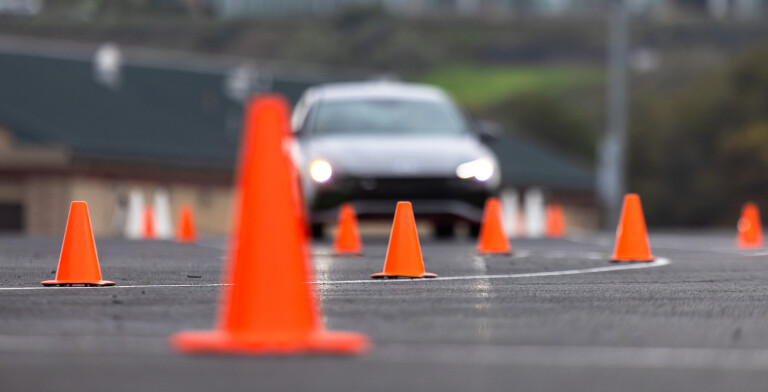
The N uses a tweaked version of the standard i30 Sedan’s infotainment system. As with all Hyundais, the interface is approachable with easily discernible menus but adds unique functions for the N.
In addition to configuring the car’s custom drive mode, the system has a performance display for throttle opening, brake pedal pressure, and oil and water temperatures, plus an integrated lap timer for track day demons. Unlike higher-end systems, this one doesn’t capture a range of data points for post-session analysis.
Like most Hyundais, the i30 Sedan N includes a range of driver-assist features like the all-important forward collision avoidance assist, blind-spot monitoring and assist, and rear cross-traffic alert. A Bose sound system and wireless phone charging are standard equipment.

The 10mm lower seating position of the new front seats isn’t apparent but the new seats are perfectly supportive, particularly for the demands of track work. On the road, they’re snug and comfortable over long distances, and the heated function is a welcome bonus for drivers in colder climates. Rear seat room is generous for the segment.
Thankfully, Hyundai’s standard practice of including an adjustable steering column with heaps of reach is carried over to the Sedan N, so finding an effective seating position is second nature. Pedals are an easy reach for the driver but the brake and throttle pedals are spaced further apart than they should be for effective heel-and-toe downshifts.
That leaves the manual driver to choose between finding a wide driving shoe or using the slick rev-matching function that, admittedly, may be more effective and precise than doing it manually.
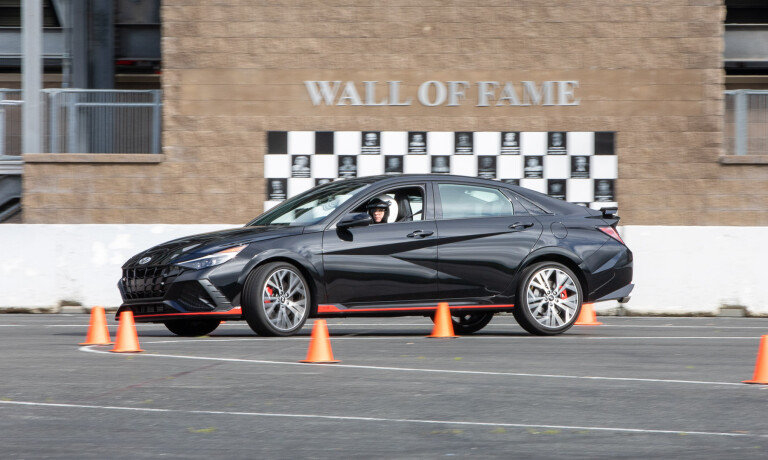
The large N drive mode buttons on the steering wheel make going from relaxed cruising to corner-carving a snap and while the instrument cluster in N mode is effective for going quickly, the infotainment system’s N performance display is a novelty.
Consider that if you’re going quickly, whether it’s on some canyon roads or a racing circuit, you don’t have time to look over at a central screen displaying small numbers. If you’re doing track work, consider pointing a camera at the display to capture your data because the system doesn’t log anything to memory for later review.
Among front-drive performance cars, this drivetrain is a jewel. The engine’s got that flat horsepower peak from 5500-6000rpm and the torque curve is more of a plateau, with maximum torque available in the meaty part of the rev range, from 2100-4700rpm. At low revs, you’re never wanting for torque. Plus, closer to redline, you’ve got massive power for maximum acceleration.
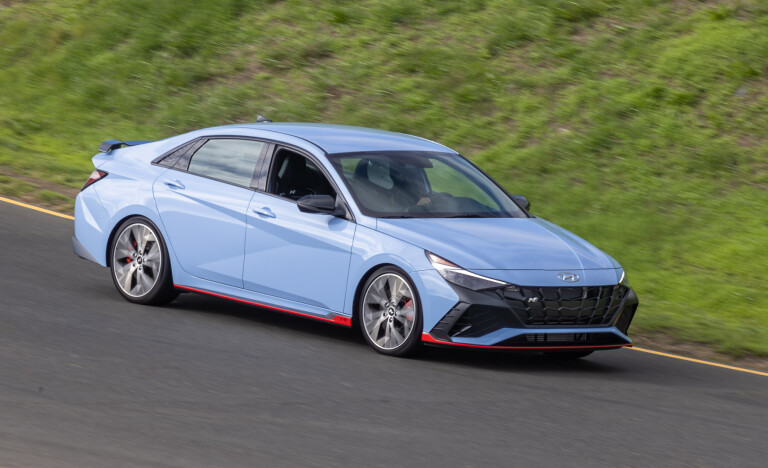
Regardless of transmission choice, the Sedan N scrambles to put down power from a stop, although the dual-clutch can always throw down its launch control party trick. Without it, the driver is rewarded with a prudent foot off the line.
Once on the move, the e-diff works its magic and around the fast and demanding Sonoma Raceway in northern California, the sedan simply never put a foot wrong. Understeer is kept to a minimum, as is torque steer.
The dual-clutch operates smoothly, both on and off track, cracking through quick upshifts and rev-matched downshifts, which can be requested from either the shifter’s manual mode or paddleshifters on the wheel.
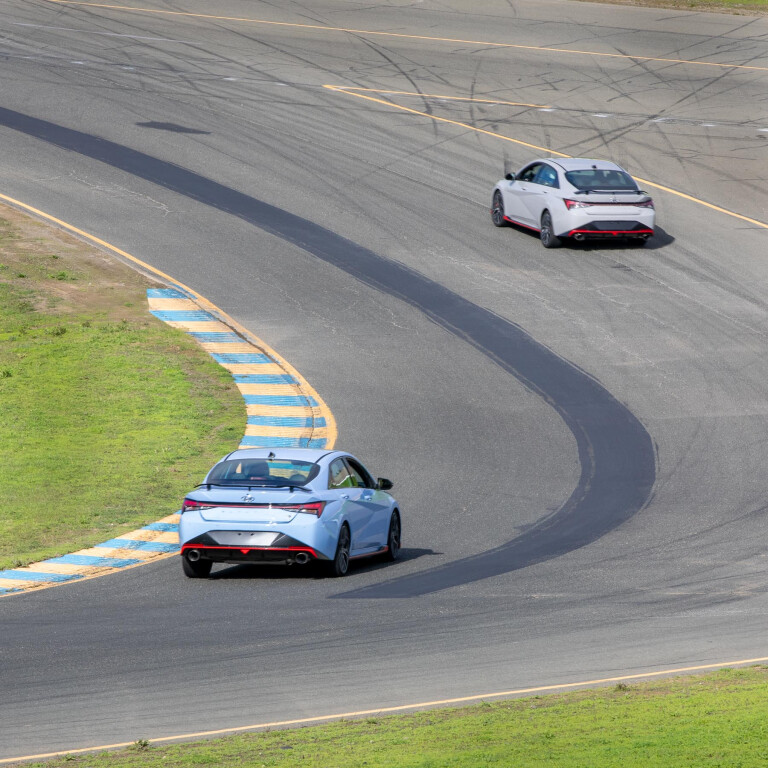
With eight cogs and the flexible turbo four, the N is always ready and eager to accelerate. In contrast to its impeccable all-around performance, the signature Hyundai dual-clutch half-heartbeat delay when shifting into reverse is still here.
Shift action of the six-speed manual leaves something to be desired. With a light clutch feel, longer throws than expected and little effort required to change gears, this feeling is more economy car than factory special. On the other hand, the shifter’s gates are well defined and the six ratios are a perfect match for the engine.
Several drizzly on-track sessions at Sonoma Raceway revealed the delightful balance of the N’s chassis tuning. This is one of the few front-drivers that’s thrilling to drive simply because it can be pointed on the throttle near its limits.
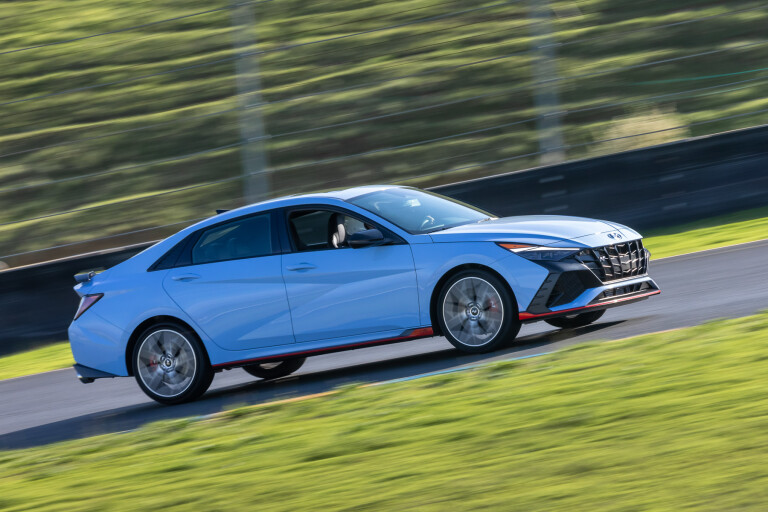
Care to tighten a line? Breathe off the throttle a little and the nose tucks in. Need the rear to rotate to set you up for the perfect exit? Give the throttle a deliberate lift, let the rear rotate around, and feed in some throttle to settle the chassis, and rocket out of the corner.
With low grip conditions around the circuit, the N could be thrown around with abandon, leaving the highly tuned stability system to pick up the pieces of sloppy driving and terrible lines. Even with the stability system switch on, it gives the driver some latitude to slide the N through corners and only intervenes before things go badly.
The quicker steering rack of the N is at home on the track and inputs translate immediately into directional changes. It’s even quick enough to catch the occasional dab of inadvertent oppo. As with most electric systems, the steering offers limited feel through the wheel, but it’s not like the N doesn’t speak to the driver. The chassis and brake pedal both offer quality feedback.
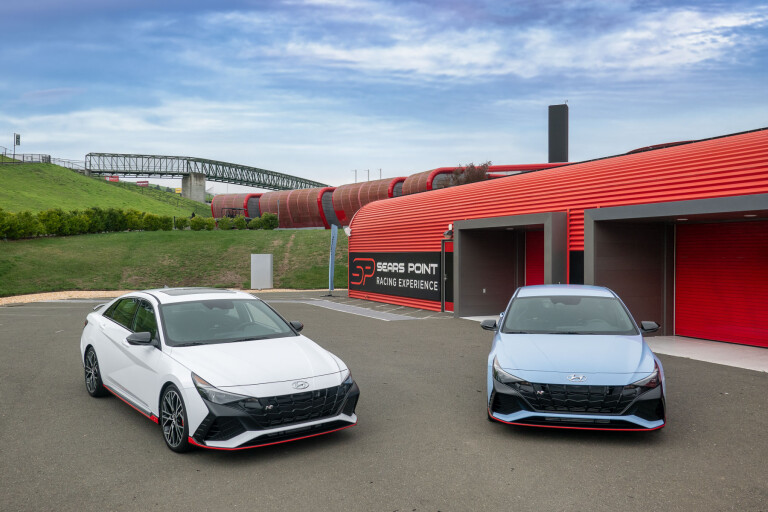
Brakes have excellent bite and the Sonoma circuit is a proper test of any performance car, with high-speed sections leading into hairpins twice per lap. The Hyundai's brakes were never overwhelmed and offered excellent feel that made on-limit trail braking into corners easy.
Save for the steering, the N gives the driver high-quality feedback that rewards the experienced hand and gives the novice the confidence to push harder.
Relative to the i30 N hatch, the sedan’s wheelbase is 70mm longer, which is not insignificant. Where the sedan loses some of its inherent agility in slower corners, it gains stability in medium- and high-speed bends, lending more confidence to the driver.
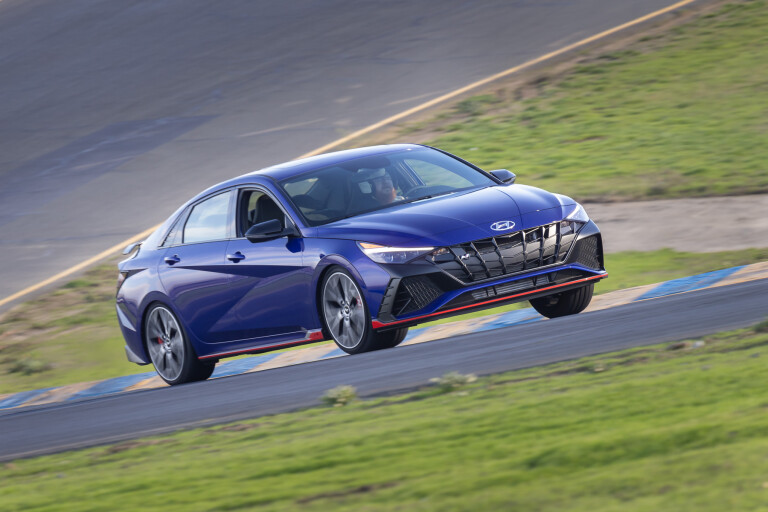
The N’s obvious competition is the Honda Civic Type R, but that is fundamentally a different argument, not necessarily an apples-to-apples comparison.
They’re both compact front-drivers, aggressively styled, powered by two-litre turbo fours, but they differ in two elemental ways. The N is the scrappy four-door newcomer, while the Civic qualifies as a hot hatch and is adorned with that legendary Type R badging. However, the e-diff of the N is an effective, new-school solution, while the Honda uses a proven mechanical limited-slip differential.
Hyundai's N brand is relatively new and fittingly, the Sedan hasn’t been constrained by old-school thinking in terms of its engineering and packaging. Plus, with every new N vehicle, Hyundai is pushing past its own limits, carefully improving these cars to be better than before.
The i30 Sedan N brings together all of that engineering prowess with an exciting new alternative to performance front-drivers.

2022 Hyundai i30 Sedan N specifications
| Body | 4-door, 5-seat sedan |
|---|---|
| Drive | front-wheel |
| Engine | 1998cc I4, DOHC, 16v, turbocharged |
| Bore/stroke | 86 x 86mm |
| Compression | 9.5:1 |
| Power | 206kW @ 5500 - 6000rpm (213kW with overboost) |
| Torque | 392Nm @ 2100 – 4700rpm |
| 0-100km/h | 5.3sec (estimated) |
| Fuel consumption | 10.2L/100km (combined/claimed) |
| Weight | 1445kg (manual) / 1495kg (DCT) |
| Power/weight | 145kW/tonne |
| Transmission | six-speed manual or eight-speed wet dual clutch |
| Suspension | MacPherson struts, anti-roll bar (f); Multi-link, anti-roll bar (r) |
| L/W/H | 4676/1826/1415mm |
| Wheelbase | 2720mm |
| Tracks | 1585mm (f); 1580mm (r) |
| Steering | Electrically assisted rack-and-pinion, variable assist |
| Brakes | 360mm ventilated discs, single-piston calipers (f); 314mm solid discs, single-piston calipers (r) |
| Wheels | 19 x 8-inch (f/r) |
| Tyres | 235/40R18 (f/r) Michelin Pilot Sport 4 S |
| Price | TBD |
Things we like
- Drivetrain
- Chassis tuning
- Magic differential
Not so much
- Light manual shift action
- Rear chassis brace blocks boot pass-through
- Lack of data acquisition for track work

COMMENTS